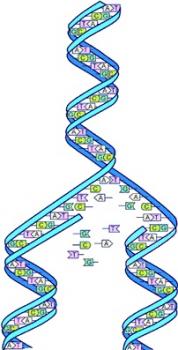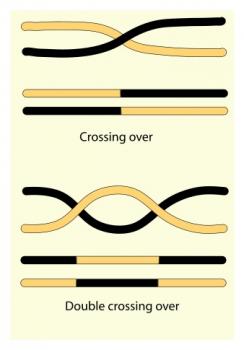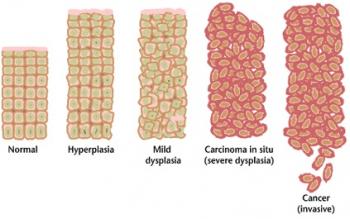Deoxyribonucleic Acid (DNA) contains coded genetic information in the form of nucleotides sequences. Nucleotides are monomers of DNA that are composed of a five-carbon sugar, nitrogenous base and phosphate group. There are four possible bases: cytosine, adenine, guanine and thymine. Double helix formation is based on complementary base pairing rules where adenine and thymine are paired with two hydrogen bonds, whilst cytosine and guanine are paired with three hydrogen bonds. Nucleotides on the same strand are bonded together by forming phosphodiester bonds between the 5th carbon of one nucleotide, and the 3rd carbon of the adjacent nucleotide. In cells, the DNA double helix is wrapped around histone proteins that supercoil to form chromosomes – located in nucleus. This genetic information is passed to offspring through genetic recombination, where both chromosomes present in male and female gametes experience cross-over to produce alleles.
Three nucleotide bases forms a codon, which is then transcripted and translated to match to a specific amino acid in protein synthesis. As more codons are processed, more amino acids are added to the growing chain on the polypeptide – this eventually forms proteins. DNA is constantly being replicated for growth and replacement of degraded DNA. One parent strand of DNA can replicated to produce two strands of identical DNA.
Errors in the genetic code can lead to mutations developing that either show no overall change, benefit the organism or be detrimental to overall fitness. Mutations that occur in non-coding satellite DNA, this usually produces no overall change in phenotypic expression. Mutations that occur in coding DNA can either bring about benefits in fitness, or produce genetic disorders or cancerous tumors. Tumors are the result of unregulated cell growth and replication, whereby changes in the DNA cause the exclusion of cell apoptosis and cell repair functions.
© BrainMass Inc. brainmass.com July 26, 2024, 9:02 pm ad1c9bdddf



